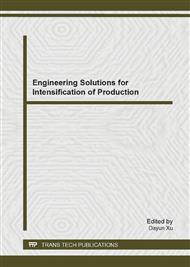p.148
p.157
p.163
p.167
p.173
p.179
p.185
p.195
p.201
Strength Analysis of Towing Extending-Retracting Equipment Based on Dynamics and Statics
Abstract:
With the increasing development of ocean engineering, towing extending-retracting equipment used widely is the basic platform realizing the engineer value of towfish. In this paper, the dynamic model of the equipment in rough sea condition is created based on Adams, and the operating parameters are determined by maximum dynamic load, as the input data of static model of the equipment. Then the static models of capture unit, swing arm and base frame are created to calculate the strength respectively. Lastly, from the results, the valuable suggestions are put forward to provide valuable references for optimization design and engineer application in future.
Info:
Periodical:
Pages:
173-178
Citation:
Online since:
February 2014
Authors:
Keywords:
Price:
Сopyright:
© 2014 Trans Tech Publications Ltd. All Rights Reserved
Share:
Citation:


